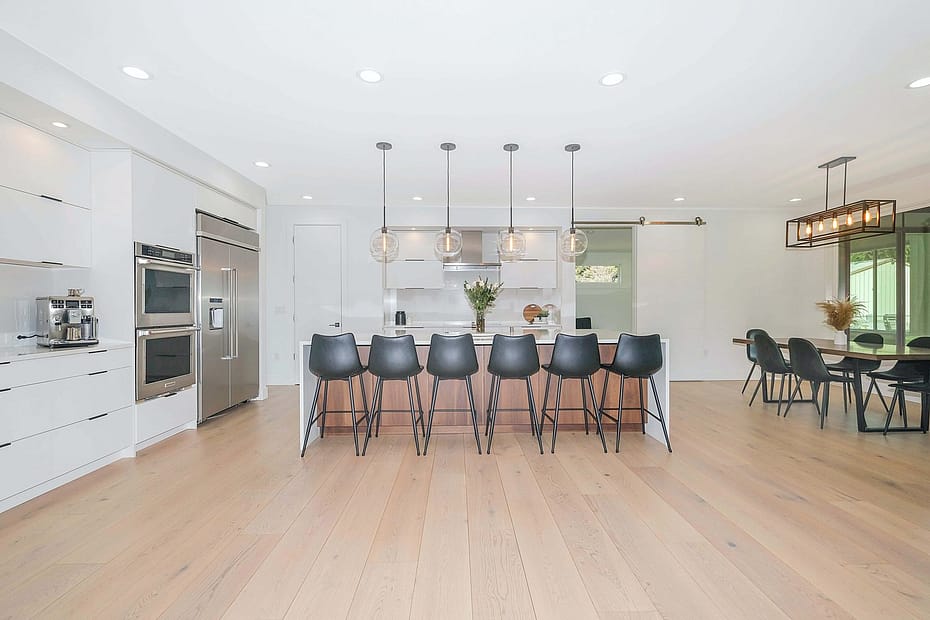The way we build and design our homes has a profound impact on the quality of social interaction that occurs within them.
Architecture plays a crucial role in shaping human behavior and facilitating meaningful connections between people.
We must understand how these factors affect how we learn, work, play, and form relationships in our communities.
Together we will look at the effects of social interaction on human health and highlight how designers can improve interiors to facilitate such interactions.

The importance of social interaction for human health
Social interaction is essential to human health and well-being, and studies have shown that individuals who have a supportive social network are less likely to experience high levels of anxiety, stress, and depression.
Furthermore, engaging in regular social interactions can improve cognitive function and enhance a sense of purpose and belonging.
Social interactions can also promote good health by positively influencing people’s living habits.
In fact, good social interactions can “enhance a sense of meaning and purpose in life.”

Social interaction at home
Social interaction at home is an essential aspect of our daily lives, and with the spread of remote working, we are spending most of our time at home.
It is also where we build meaningful relationships with the people closest to us.
For children and young people, the social interaction that occurs at home is essential to their successful development.
This is true whether a person grew up in a multigenerational home or not.
Research has shown that social interaction at home can have many benefits for our health and well-being – from early childhood to late adulthood.
A 2017 report from the UK Green Building Council stresses the importance of social interaction at home.
According to the report, social interaction is a major factor in determining the physical and mental health and well-being of an individual.
While these interactions occur wherever we go, “the majority…occur within our homes and immediate surroundings.”
“We intuitively value the interactions that occur at home more as a result of their long-term presence,” the report notes.
How does internal planning affect psychology and behavior?
Positive effects of color design
Design and architecture play a crucial role in facilitating such social interactions within our homes.
By creating open spaces that encourage communication and collaboration,
Designers can help residents connect with each other on a deeper level.
For example, an open-plan kitchen and living area encourages family members or roommates to spend time together while cooking or relaxing.
Likewise, outdoor spaces such as patios, balconies,
or gardens can provide opportunities for neighbors to come together and enjoy the benefits of nature.
Any place that allows people to socialize fleetingly – no matter how brief – can be valuable.
“Shared hallways provide an important place to socialize, interact and stay.”
It’s clear that the way we build and design our homes has a huge impact on our ability to form meaningful connections
and maintain mental health.

Negative effects of closed interior layout
On the other hand, a closed and fragmented interior can lead to feelings of isolation and disconnection.
If residents are constantly separated by walls or doors, they may have fewer opportunities to interact with each other.
They may feel less connected as a result, and this can be particularly harmful for individuals who live alone or those who suffer from social anxiety.
Furthermore, a lack of natural light or access to the outdoors can also negatively impact mental health and social interactions within the home.
Without access to natural light and fresh air,
Individuals may experience low mood levels and decreased motivation to participate in social activities.
It is crucial that designers prioritize natural elements such as windows and green spaces that encourage a healthy and sociable living environment.

Striking a balance between private and social space
Enclosed spaces have a way of isolating family members from each other and limiting healthy social interactions.
However, it is important to note that design should not focus solely on encouraging social interaction.
You must also take into account the need for privacy and personal space.
This is especially vital in multi-generational families.
Striking the right balance can be difficult, but it is essential for optimal social interaction and mental health.
Therefore, designers must think creatively about how to incorporate private areas while still encouraging social connections.
Through research and responsible design practices,
architects and designers can effectively create environments that foster social interaction.
At the same time, they can create adaptable spaces that respect individual needs for privacy and personal space.
The benefits of these efforts will lead to happier, healthier communities where people feel valued, supported, and connected to each other.
More on INJ Architects:

